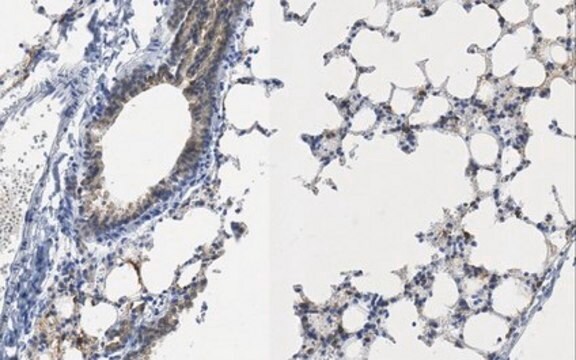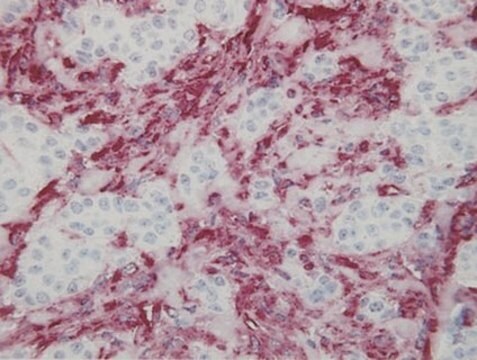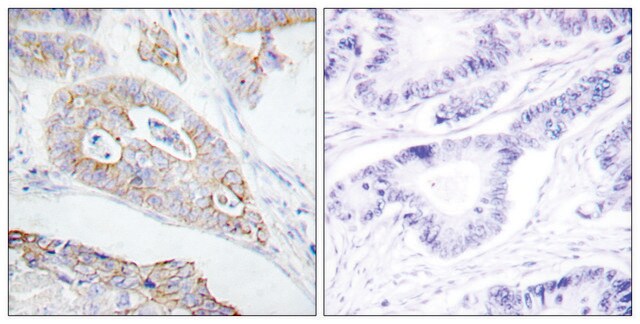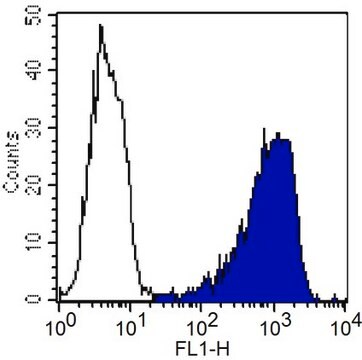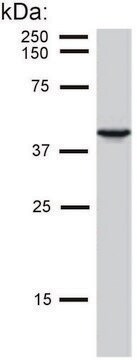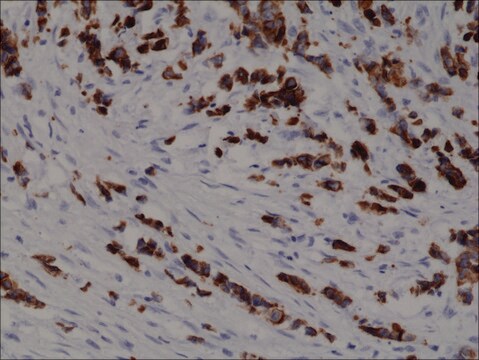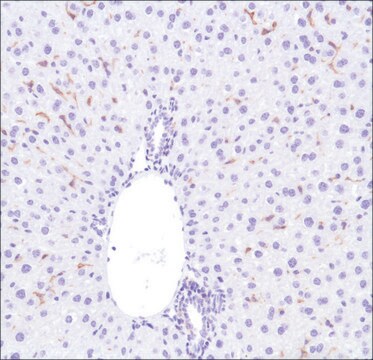MAB3238
Anti-Cytokeratin 19 Antibody, clone RCK108
clone RCK108, Chemicon®, from mouse
Sinônimo(s):
Anti-CK19, Anti-K19, Anti-K1CS
About This Item
Produtos recomendados
fonte biológica
mouse
Nível de qualidade
forma do anticorpo
purified antibody
tipo de produto de anticorpo
primary antibodies
clone
RCK108, monoclonal
reatividade de espécies
human
fabricante/nome comercial
Chemicon®
técnica(s)
flow cytometry: suitable
immunocytochemistry: suitable
immunohistochemistry: suitable (paraffin)
western blot: suitable
Isotipo
IgG1κ
nº de adesão NCBI
nº de adesão UniProt
Condições de expedição
dry ice
modificação pós-traducional do alvo
unmodified
Informações sobre genes
human ... KRT19(3880)
Descrição geral
Cytokeratin 19 (molecular mass 40 kD) is a marker of simple epithelia. Cytokeratin 19 has been found in mesothelial and mesothelioma cells, and in ovarian cysts, cystadenomas, and ovarian carcinomas. It has been shown to be present in the basal layer of non-keratinizing stratified squamous epithelia such as the oral cavity and the ectocervix. Cytokeratin 19 has also been found in adenocarcinomas of the lung and in tumor cells of pulmonary metastases.
It has been reported that cytokeratin 19 can be found in the ductal cells of normal pancreas and in pancreas cancers. It was found that ductal cells of normal pancreas express a number of cytokeratins including cytokeratin 19, whereas acinar cells of normal pancreas also express numerous cytokeratins but not cytokeratin 19. Thus it is determined that pancreas cancers consistently express certain cytokeratins including cytokeratin 19, as do normal ductal cells, which indicates that pancreas cancers may originate from normal ductal cells.
Especificidade
Imunogênio
Aplicação
Cell Structure
Cytokeratins
Immunohistochemistry: 1:100-1:200 on frozen and paraffin embedded tissue (after treatment with pepsin or trypsin) sections.
Immunocytochemistry: 1:100-1:200
Flow cytometry: 1:100-1:200.
Optimal working dilutions must be determined by the end user.
forma física
Armazenamento e estabilidade
Outras notas
Informações legais
Exoneração de responsabilidade
Não está encontrando o produto certo?
Experimente o nosso Ferramenta de seleção de produtos.
recomendado
Código de classe de armazenamento
12 - Non Combustible Liquids
Classe de risco de água (WGK)
WGK 2
Ponto de fulgor (°F)
Not applicable
Ponto de fulgor (°C)
Not applicable
Certificados de análise (COA)
Busque Certificados de análise (COA) digitando o Número do Lote do produto. Os números de lote e remessa podem ser encontrados no rótulo de um produto após a palavra “Lot” ou “Batch”.
Já possui este produto?
Encontre a documentação dos produtos que você adquiriu recentemente na biblioteca de documentos.
Artigos
This page shows the long-term culture and in-plate staining protocols using the CellASIC ONIX Microfluidic platform.
Nossa equipe de cientistas tem experiência em todas as áreas de pesquisa, incluindo Life Sciences, ciência de materiais, síntese química, cromatografia, química analítica e muitas outras.
Entre em contato com a assistência técnica